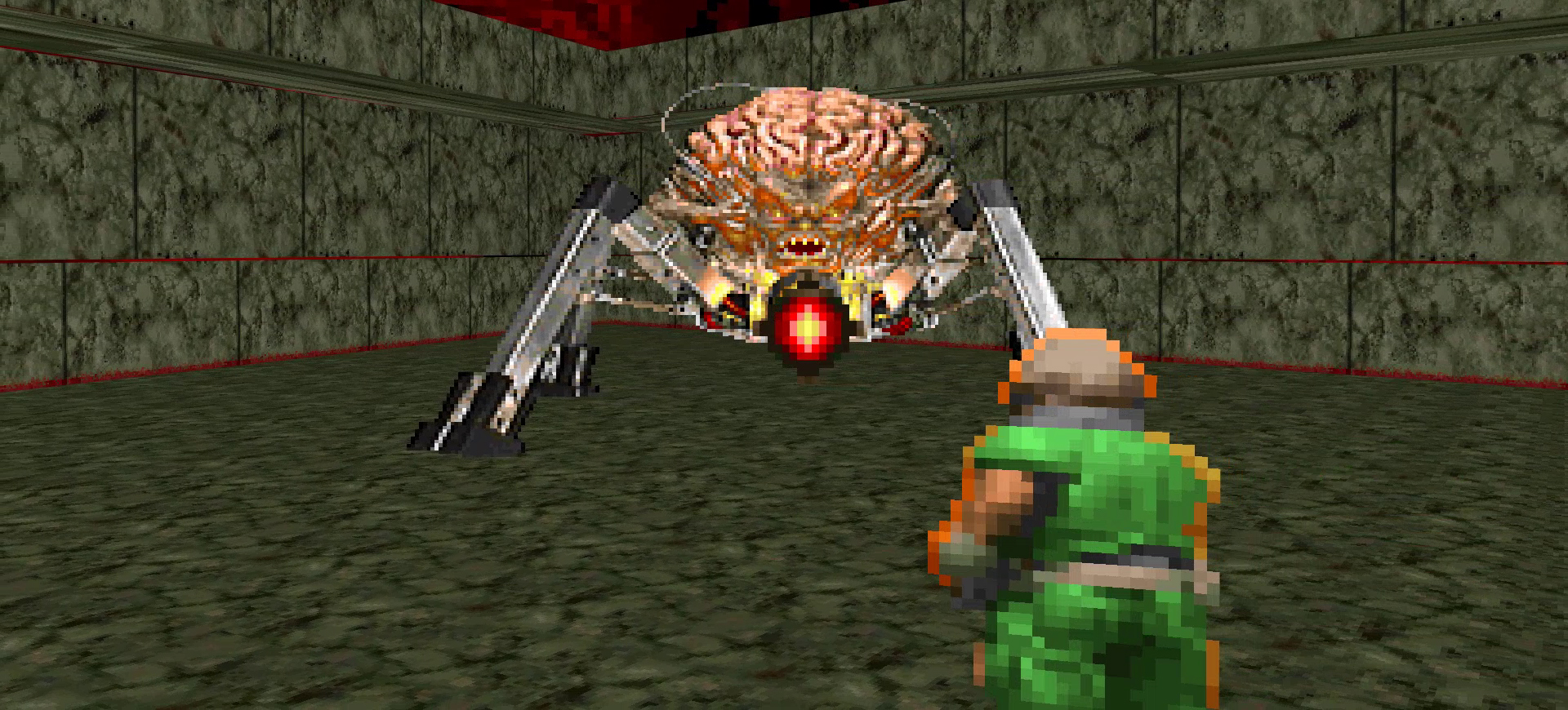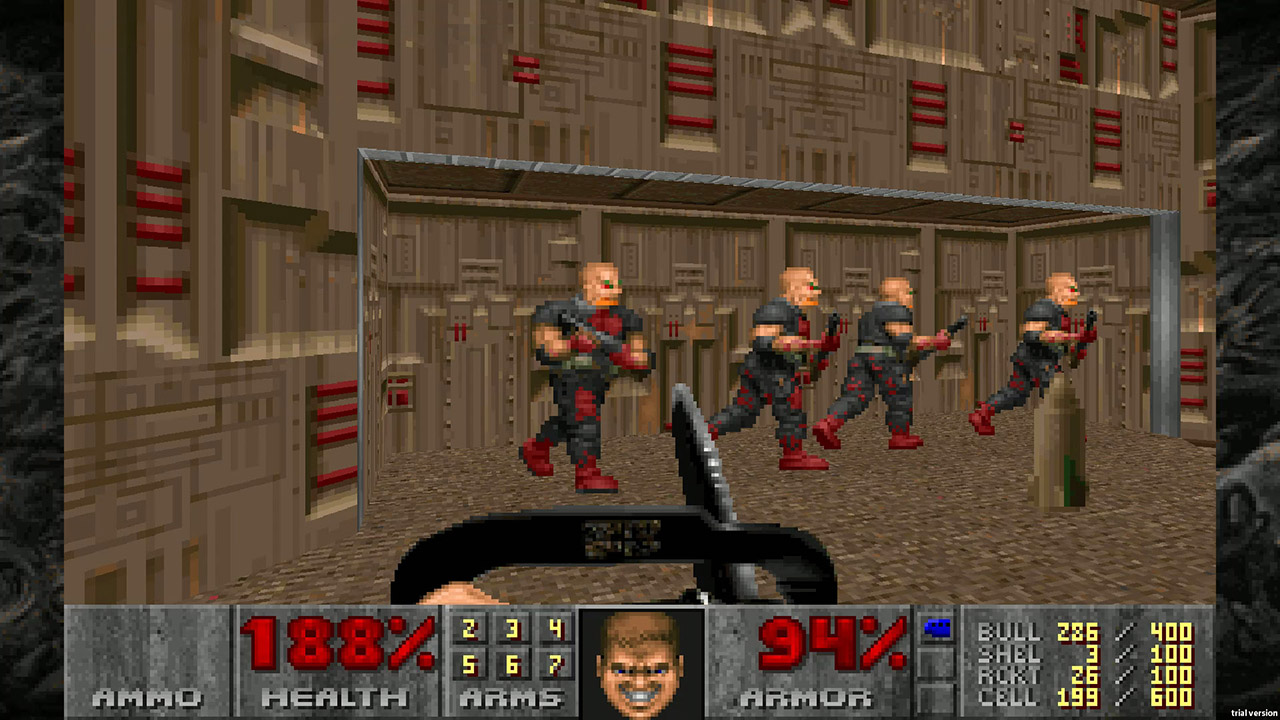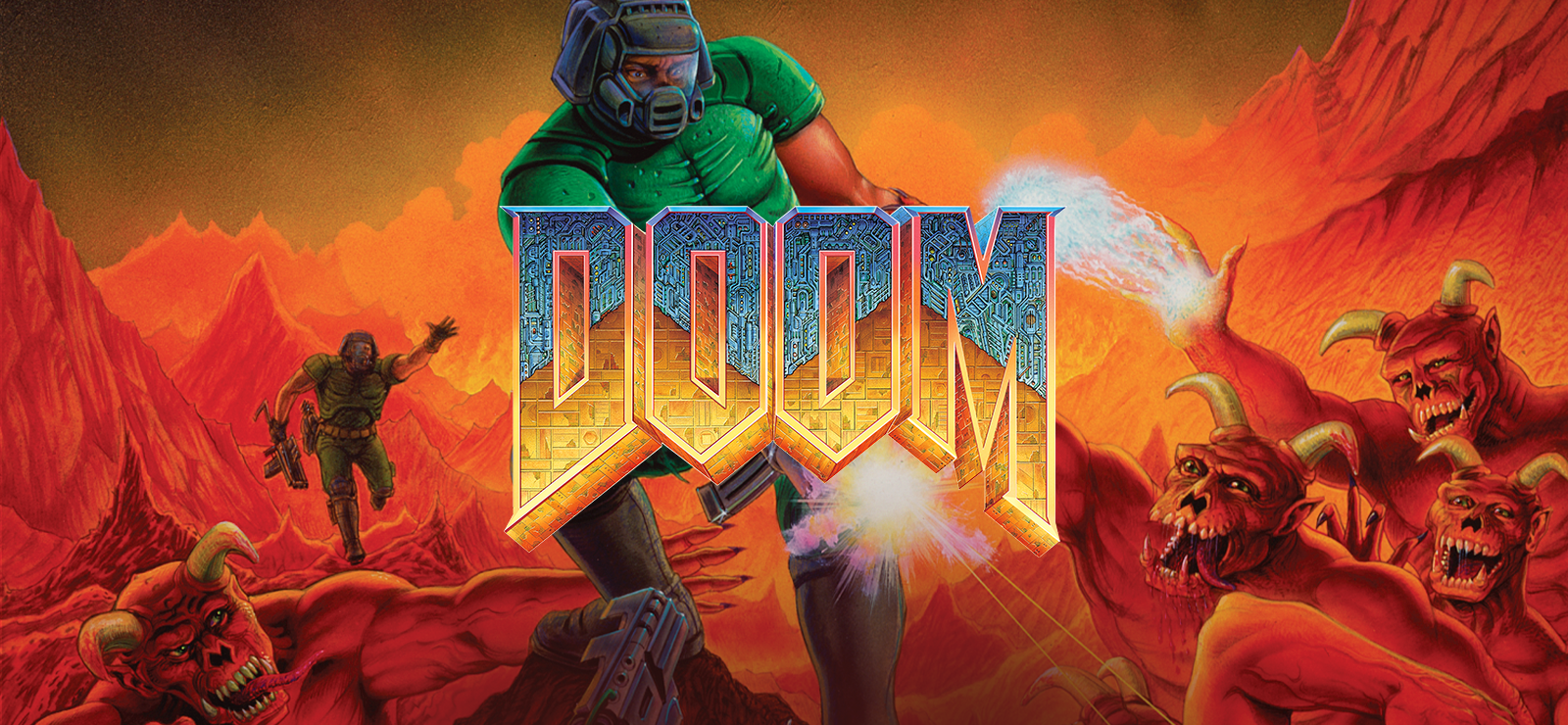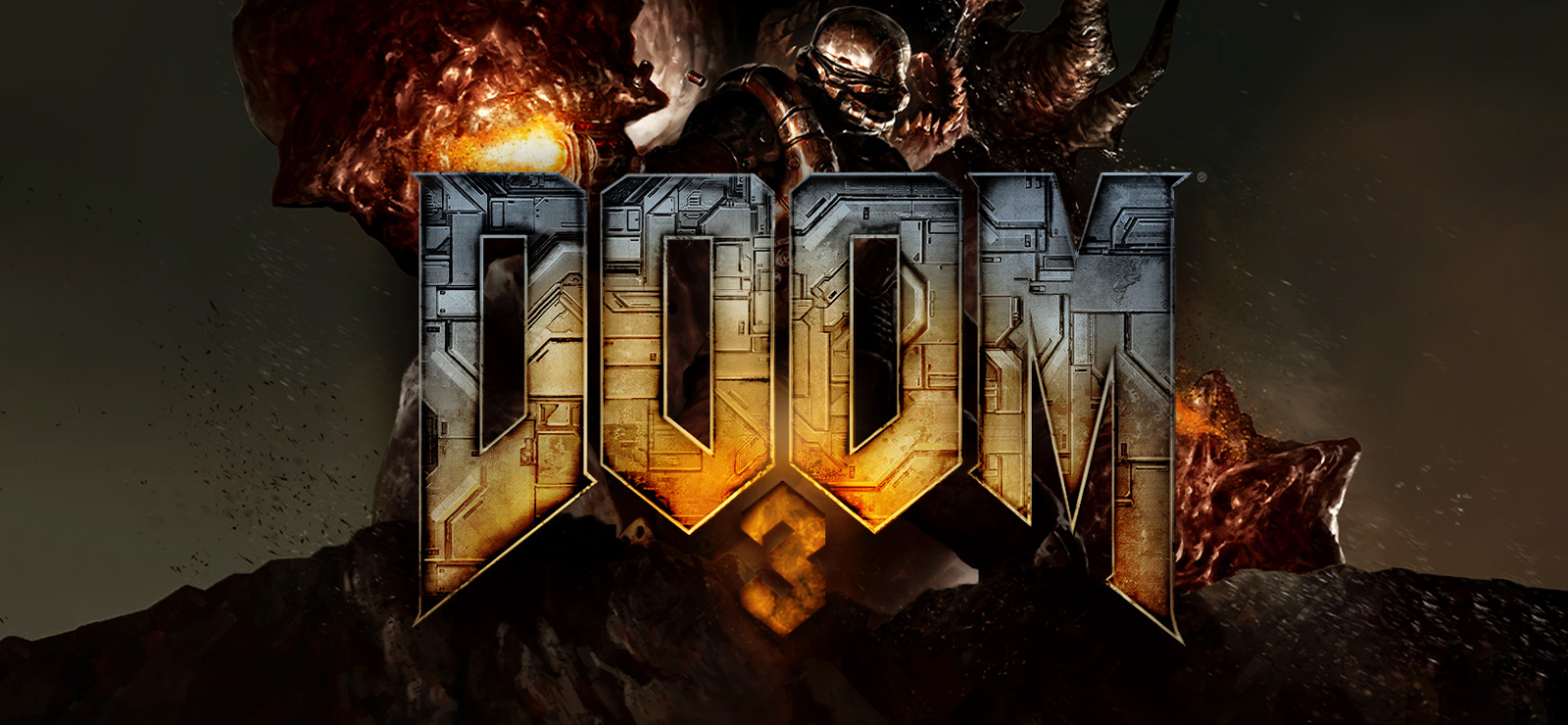In the realm of video games, few titles have left as indelible a mark as Doom. This iconic game, first released in 1993, not only pioneered the first-person shooter (FPS) genre but also redefined the way we interact with virtual worlds. With its relentless action, cutting-edge technology, and a fervent fan base, Doom has etched its name into the annals of gaming history. In this comprehensive exploration, we’ll delve into the genre-defining aspects, platforms of release, gameplay mechanics, key features, strategies and cheats, critical reception, cultural impact, sequels, and examples of similar games that have been inspired by this classic.
Doom: Birth of a Genre
Genre Origins Doom stands as a cornerstone of the FPS genre, but what exactly is an FPS? First-person shooters, as the name suggests, immerse players in a first-person perspective, putting them directly in the shoes of the game’s protagonist. This perspective revolutionized gaming, offering an unprecedented level of immersion.
Before Doom, FPS games were relatively niche, often limited to early, crude attempts like 1973’s ‘Maze War’ and 1987’s ‘Hovertank 3D.’ It wasn’t until the release of id Software’s Doom that the genre truly took off.

Platforms of Release Doom made its debut on December 10, 1993. Initially, it was released exclusively for MS-DOS, the predominant PC operating system of the time. This decision proved pivotal, as it tapped into the growing market of PC gamers hungry for cutting-edge experiences.
However, Doom’s influence didn’t remain confined to PCs. Over the years, it saw releases on a multitude of platforms, cementing its status as a cross-platform phenomenon. Doom found its way onto consoles like the Sega 32X, Super Nintendo, and even the Sony PlayStation. This wide accessibility ensured that players across various gaming ecosystems could partake in its action-packed mayhem.
Gameplay: A Symphony of Carnage
First-Person Carnage At its core, Doom is a game about unbridled chaos and relentless combat. You assume the role of a nameless space marine, tasked with single-handedly battling hordes of demonic creatures unleashed from the depths of Hell. The game unfolds entirely in first-person perspective, placing the player directly into the thick of the action.

Frantic Firefights Doom’s gameplay is characterized by fast-paced, adrenaline-pumping firefights. Armed with an impressive arsenal that includes shotguns, rocket launchers, and the iconic BFG 9000, players obliterate their demonic foes with extreme prejudice. The sheer variety of weapons and the visceral satisfaction of using them set a standard for FPS games that persists to this day.
Labyrinthine Levels While Doom’s primary focus is on action, it also boasts intricate level design. The game features a series of increasingly complex and challenging levels, often requiring players to solve puzzles and find keys to unlock new areas. These levels are a testament to Doom’s depth beyond its blood-soaked surface.

Key Gameplay Features: Innovations that Shaped the Industry
Multiplayer Mayhem Doom was not just a solo experience. It introduced multiplayer gaming to the masses, allowing friends to engage in frenetic deathmatches or cooperate to tackle the game’s challenging campaign. This multiplayer aspect laid the groundwork for the rise of online multiplayer gaming that we see today.
Modding and Customization Doom’s code was left intentionally open, inviting players to tinker with the game’s mechanics and create their own custom levels and mods. This modding community breathed new life into the game, extending its longevity and showcasing the power of player-driven content creation.
3D Graphics Revolution Doom was a technical marvel of its time. It utilized cutting-edge 3D graphics technology to render its environments and enemies. This breakthrough not only set a new visual standard but also pushed the capabilities of hardware, paving the way for more advanced 3D gaming in the future.
Strategies and Cheats: Unleashing Chaos
Strategic Carnage While Doom may seem like a mindless shooter at first glance, it rewards players who approach it strategically. Maneuvering through tight corridors, managing ammo, and knowing when to push forward or retreat are vital skills. The game’s difficulty settings range from “I’m too young to die” to “Nightmare!” offering a challenge for players of all skill levels.
Cheats and Easter Eggs Doom is also known for its assortment of cheats and hidden secrets. Players could enter codes to unlock god mode, all weapons, or even access secret levels. These cheats added an extra layer of fun, allowing players to experiment with the game’s mechanics in wild and unpredictable ways.
:max_bytes(150000):strip_icc()/original-doom-free-download-812146-2-5c3a1f6346e0fb0001023101.png)
Reviews and Cultural Impact: A Game-Changer
Critical Acclaim Upon its release, Doom received widespread critical acclaim. Gaming magazines and enthusiasts hailed it as a groundbreaking achievement in video game design. The game’s innovative technology, visceral gameplay, and atmospheric sound design were universally praised.
Cultural Phenomenon Doom quickly transcended the gaming world, seeping into popular culture. It spawned a fervent fan base, with players sharing tips, tricks, and custom mods. The game’s influence extended to music, with bands like “Nine Inch Nails” creating the game’s iconic soundtrack. Doom’s impact on gaming and entertainment was undeniable.
Controversy and Moral Panic Doom’s hyper-violent content and occult imagery also drew criticism. It became a focal point in the debate over video game violence, with concerned parents and politicians decrying its influence on young minds. This controversy only served to elevate Doom’s status, making it a symbol of rebellious gaming culture.
Sequels and Heirs to the Throne
Doom II: Hell on Earth Following the success of the original Doom, id Software released Doom II: Hell on Earth in 1994. This sequel expanded upon the formula with new weapons, enemies, and levels. It was met with critical acclaim and solidified Doom’s position as a gaming juggernaut.
Doom 3 Doom 3, released in 2004, marked a departure from the fast-paced action of its predecessors. It leaned heavily into horror elements, emphasizing atmospheric tension and jump scares. While it divided fans due to its deviation from the classic formula, it showcased the franchise’s ability to evolve.
Doom (2016) and Doom Eternal In 2016, a reboot simply titled “Doom” returned the series to its roots. It was a high-octane return to form, featuring modern graphics and gameplay while maintaining the classic Doom feel. Its sequel, “Doom Eternal” (2020), continued the tradition of relentless action and received critical acclaim.

Similar Games: Walking in Doom’s Shadow
Quake Developed by the same studio, id Software, Quake was a spiritual successor to Doom. It introduced true 3D environments and expanded on the fast-paced multiplayer action that Doom pioneered. Quake became another landmark title in the FPS genre.
Half-Life Valve’s Half-Life, released in 1998, brought a more narrative-driven approach to the FPS genre. It combined storytelling with frenetic action, setting a new standard for immersive single-player experiences.
Duke Nukem 3D Duke Nukem 3D, released in 1996, shared Doom’s irreverent sense of humor and action-packed gameplay. It became another cult classic in the world of FPS gaming.
Halo: Combat Evolved Microsoft’s Halo series, starting with “Halo: Combat Evolved” in 2001, revolutionized FPS games on consoles. It introduced a gripping sci-fi narrative, memorable characters, and innovative multiplayer modes.
Doom’s Impact on the Gaming Industry
Technological Advancements One cannot overstate the technological innovations Doom brought to the table. Its use of 3D graphics and the creation of an immersive, interactive 3D environment set a new bar for what gaming could achieve. The game’s engine, known as the Doom engine or id Tech 1, became the foundation for many other influential games, including Heretic, Hexen, and Strife. This engine’s adaptability and scalability laid the groundwork for the evolution of 3D gaming technology.
Pioneering Multiplayer Doom’s multiplayer functionality was revolutionary. While it was not the first game to offer multiplayer experiences, it was the first to do so in a way that felt visceral and engaging. LAN parties and dial-up connections allowed players to engage in fierce deathmatches, setting the stage for the rise of online multiplayer gaming in the years to come. The concept of connecting with friends or strangers across the globe for epic battles became a defining feature of FPS games.
Modding and Community Engagement Doom’s decision to release its source code to the public in 1997 was a watershed moment in gaming history. This act encouraged a thriving modding community that created custom levels, total conversions, and even entirely new games using Doom’s engine. The modding scene not only extended the game’s longevity but also showcased the power of player-driven content creation. It fostered a culture of player engagement that continues to influence game development today.
Doom’s Continued Relevance

Remakes and Re-Releases Doom’s timeless appeal has led to numerous remakes and re-releases. In 2019, Bethesda Softworks released a reboot of the original titled “Doom.” It modernized the game’s graphics and gameplay while staying faithful to the core experience. This remake received critical acclaim, introducing Doom to a new generation of gamers. Additionally, Doom has been made available on various platforms, from smartphones to modern consoles, ensuring its accessibility and relevance.
Eternal Cultural Significance Doom has become a cultural icon in its own right. Its imagery, including the iconic visage of the Doom Slayer and the menacing demons of Hell, is instantly recognizable. The game’s influence extends into other media, with references in movies, TV shows, and even music. The term “Doom clone” was coined to describe other FPS games that emulated its style, further solidifying its place in gaming history.
Speedrunning and Competitive Play Doom’s legacy also includes the birth of speedrunning as a competitive gaming niche. Players have developed intricate routes and strategies to complete Doom levels in record time. This competitive aspect has led to the creation of events like “Doom Done Quick,” where players raise money for charity by speedrunning the game. The enduring appeal of Doom in the speedrunning community showcases its timeless gameplay.
Sequels to Doom
The groundbreaking success of the original “Doom” in 1993 by id Software led to a series of sequels and expansions that built upon its fast-paced, first-person shooter gameplay, pioneering graphics, and gripping atmosphere. Here’s a look at the key sequels that have expanded the “Doom” universe:
1. Doom II: Hell on Earth (1994)
“Doom II” was released a year after the original game and continued the story directly. It introduced new enemies, a new super shotgun weapon, and larger, more complex levels. The game retained the core gameplay mechanics that made the original a hit but expanded on the scale and intensity of the battles.
2. Final Doom (1996)
“Final Doom” includes two standalone episodes, “The Plutonia Experiment” and “TNT: Evilution.” These episodes were created by community members under the supervision of id Software. Both episodes featured new levels with challenging design and difficulty, providing more content for avid “Doom” fans.
3. Doom 64 (1997)
Originally released for the Nintendo 64, “Doom 64” was a unique entry in the series, featuring completely new levels, improved graphics, and a darker, more atmospheric tone. It was later re-released for modern platforms, allowing new generations to experience this classic title.
4. Doom 3 (2004)
“Doom 3” represented a significant shift in the series, focusing more on survival horror elements and a narrative-driven experience. It featured a comprehensive graphical overhaul using id Tech 4, creating a highly immersive and terrifying atmosphere. The game was praised for its graphics and sound design but had a more linear and slower-paced approach compared to its predecessors.

5. Doom (2016)
A reboot of the franchise, simply titled “Doom,” was released in 2016. It returned to the fast-paced, brutal combat of the original games while incorporating modern graphics and mechanics. The game was a critical and commercial success, praised for its fluid movement, engaging combat, and faithful modernization of the classic “Doom” formula.
6. Doom Eternal (2020)
“Doom Eternal,” the direct sequel to the 2016 reboot, expanded on its predecessor’s gameplay with even more frenetic action, new movement mechanics, and an emphasis on resource management. The story continues the fight against demonic forces with new locations, enemies, and a deeper narrative. The game received acclaim for its fast-paced gameplay, level design, and visuals.
7. DLC and Expansions
- The Ancient Gods – Part One (2020): This expansion continues the story from “Doom Eternal,” adding new levels, enemies, and a challenging new chapter in the “Doom” saga.
- The Ancient Gods – Part Two (2021): The second part of the expansion concludes the narrative arc started in the main game and its first expansion, bringing new gameplay elements and an epic conclusion.
8. Future Prospects
While there haven’t been any official announcements for new sequels as of now, the success of “Doom Eternal” has left fans eagerly anticipating the next chapter. Given the series’ history of innovation and evolution, the future of “Doom” promises more intense action and groundbreaking gameplay.
Cultural Impact Beyond Gaming
Influence on Music Doom’s impact extends to the realm of music. Trent Reznor of the industrial rock band Nine Inch Nails provided the soundtrack for the game. His haunting, atmospheric compositions added an extra layer of intensity to the gameplay. The music was so well-received that it helped popularize Nine Inch Nails and showcased the potential for immersive soundtracks in gaming.
Memes and Internet Culture Doom’s influence has spilled over into internet culture and memes. Iconic phrases like “Rip and Tear” and “BFG Division” have become internet catchphrases, and images of the Doom Slayer have been used in countless internet memes. Doom’s presence on platforms like Twitch and YouTube has allowed it to maintain a strong online presence.
Inspiring Creativity Beyond gaming and entertainment, Doom has inspired creativity in various fields. Artists have created stunning fan art, and writers have crafted fan fiction and lore expansions. This outpouring of creativity speaks to the deep connection fans have with the game and its rich universe.
A Lasting Legacy
In conclusion, Doom’s impact on the gaming industry and popular culture cannot be overstated. It birthed the FPS genre as we know it today, pioneered multiplayer gaming, and embraced the power of player-driven content creation. Its influence can be seen in countless games, both within and outside the FPS genre. Doom’s legacy endures not only through its sequels and remakes but also through its continued relevance in the worlds of competitive gaming, music, and internet culture. As long as gamers continue to “Rip and Tear,” Doom’s place in the pantheon of gaming greats remains secure.

